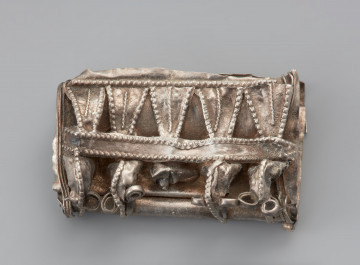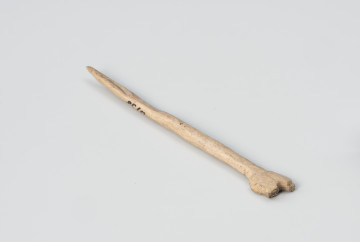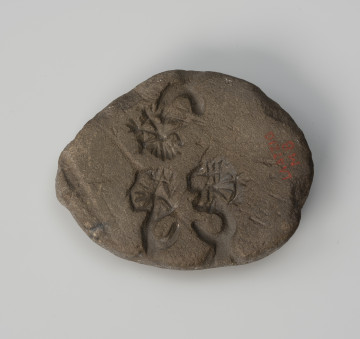
Captorga
900 — 1000
National Museum in Szczecin
Part of the collection: Middle Ages
Kaptorga are small containers made of silver, bronze or, more rarely, tin; they were elements of necklaces or separate pendants. They are known mainly from early medieval treasures; more rarely, they are discovered in cemeteries. These specific Slavic ornaments from the 10th-13th century took the form of a trapezoid or rectangle, which is why they are referred to in archaeological nomenclature as trapezoidal or rectangular kaptorga. Due to the nature of their surface decoration with images of animals, griffins, and the tree of life motif and their occurrence in the context of Arab dirhams in treasures, it was long thought that they were oriental products or made under the strong influence of oriental art. The hypothesis of a Muslim origin of kaptorga was also connected with traditional boxes. In the cultural circle, they were hung around the neck and contained cards with quotations from the Koran were placed. Pomeranian kaptorga are characterised by exceptionally rich ornamentation using filigree and granulation techniques and artistic decoration such as linear, circular and garland motifs and stylised horse figures. Some are so expressive that one can see saddles and decorative caps put on the horses' reins. The largest collection of fragments of silver kaptorga in Pomerania was discovered in Łupawa, the Słupsk district, in a hoard from the end of the 11th and beginning of the 12th century. They all represent the rectangular type. Among about 100 fragments, nearly 20 are decorated with filigree and zoomorphic motifs. While on the remaining ones, nodules and grains are visible. Among them, there is no kaptorga preserved in whole.
Anna Bogumiła Kowalska
Author / creator
Dimensions
cały obiekt: height: 1.6 cm, width: 3.2 cm
Object type
adornment
Technique
filigree, casting, hand made, individual
Material
silver
Creation time / dating
Owner
Muzeum Narodowe w Szczecinie
Identification number
Location / status

900 — 1000
National Museum in Szczecin

800 — 1200
National Museum in Szczecin

701 — 1150
National Museum in Szczecin
DISCOVER this TOPIC
Castle Museum in Łańcut
DISCOVER this PATH
Educational path